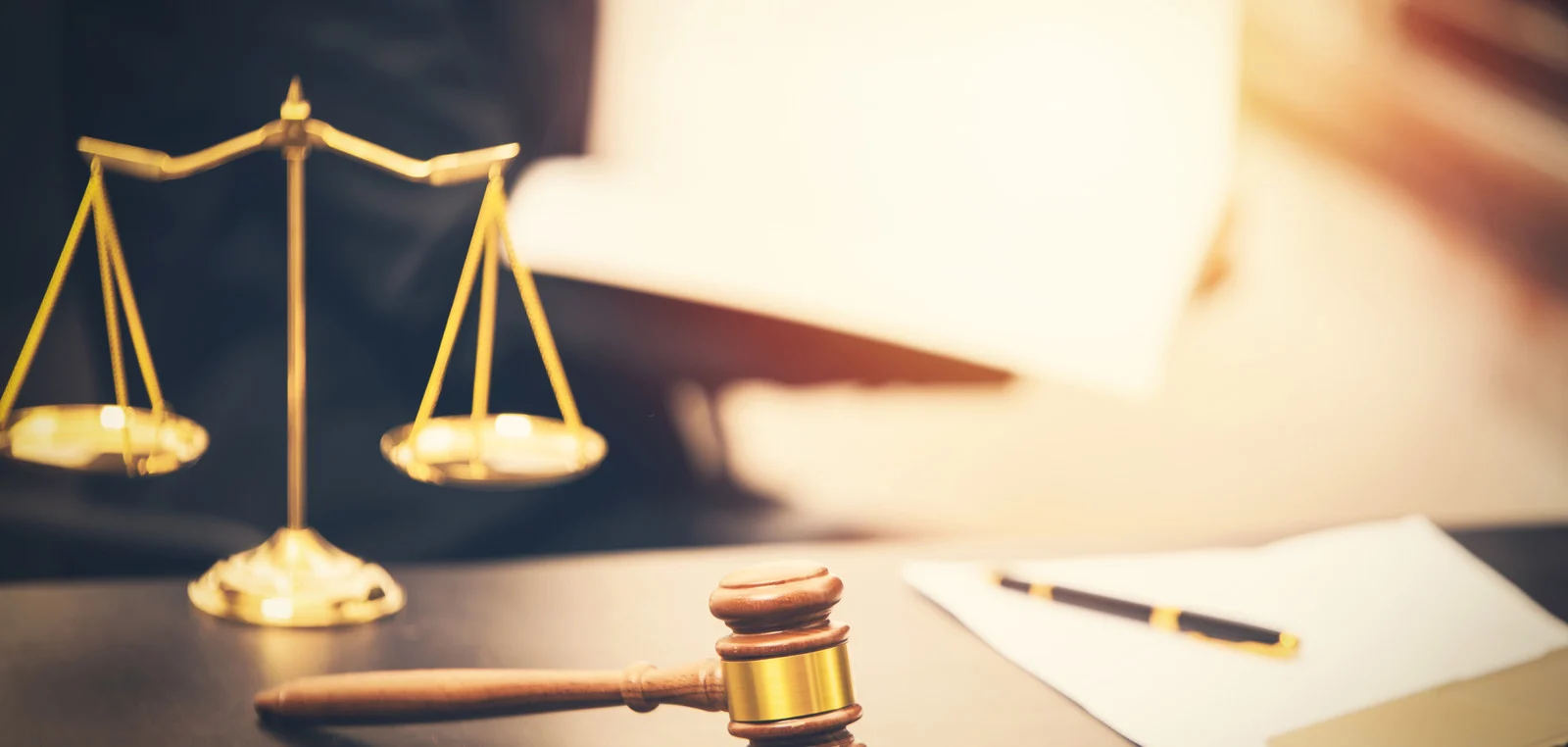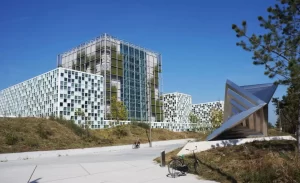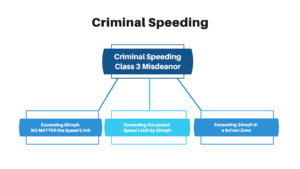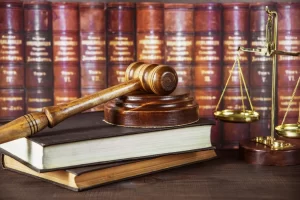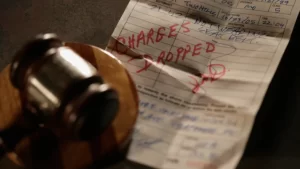What is Criminal Justice?
Criminal justice is the system of practices and institutions of governments that are directed at upholding social control, deterring and mitigating crime, or sanctioning those who violate laws with criminal penalties. It is also the set of laws and practices that constitute legal and social control over criminal behavior.
Outline of Criminal Justice System
Law Enforcement
Law enforcement officers, like police officers, sheriffs and detectives, are responsible for protecting people and property, enforcing laws, responding to emergencies, and investigating crimes. They patrol assigned areas, respond to calls for assistance, make arrests, issue citations, and testify in court.
Courts
Courts resolve disputes between parties and punish those convicted of crimes. The court system adjudicates criminal cases through a trial and renders judgments of guilt or innocence. Courts review police procedures to ensure they follow constitutional requirements and weigh an individual’s rights against societal concerns.
Correctional System
The correctional system supervises people accused or convicted of crimes. Jails house people awaiting trial or serving short sentences. Prisons confine convicted criminals for longer periods in government facilities. Probation allows convicted offenders to remain in the community if they meet certain conditions. Parole is the conditional supervised release of prisoners before completing their sentence.
Victim Services
Victim services provide assistance and advocacy for victims and witnesses of crimes. These services may include emotional support, crisis intervention, shelter and transportation, counseling, and assistance in dealing with the justice system. Restorative justice programs bring victims and offenders together to facilitate healing.
Objectives of Criminal Justice
The primary objectives of the criminal justice system are:
Enforcing Laws
Laws enacted by legislative bodies provide structure, define criminal acts, and maintain social order. Law enforcement ensures that laws are followed.
Reducing Crime
By imposing penalties on lawbreakers, the justice system aims to deter future criminal activity. Removing offenders from society prevents them from committing more crimes.
Punishing Offenders
Courts impose punishment to reprimand convicted criminals for misdeeds. Sentences satisfy public demand for reform. Fines, imprisonment, probation, and execution are typical sanctions.
Rehabilitating Offenders
Correctional programs aim to change criminal tendencies and prepare incarcerated people to re-enter society. Treatment, education, job training, counseling, and drug rehabilitation are common approaches.
Protecting Rights
Constitutional rights like due process and equal protection provide legal safeguards. Courts enforce these rights when resolving disputes. The exclusionary rule limits improperly obtained evidence.
Providing Victim Restitution
Victim restitution repays victims for losses resulting from a crime. Restitution demonstrates the offender’s responsibility. It may be monetary payment or community service.
Maintaining Public Order
Deterrence and incapacitation of criminals upholds peace and order. Police presence and visibility prevents opportunities for illegal acts. Removing offenders promotes safety.
History and Evolution
The formal criminal justice system has evolved over many centuries from early tribal and religious law enforcement to contemporary policing.
Ancient Societies
The Code of Hammurabi and Law of Moses prescribed conduct and punishment in ancient Babylonian and Jewish societies. Physical retaliation like “an eye for an eye” was condoned.
Roman and Germanic Law
Roman law codified crimes and instituted criminal courts. Accused persons could demand trial. Germanic law developed communal policing, corporal punishment, fines, and victim restitution.
Monarchy and Canon Law
Kings asserted authority over nobles, controlled punishment, and expanded the death penalty. The Catholic Church established ecclesiastical courts and sanctions like excommunication.
Common Law
The Norman Conquest brought common law to England. Judges interpreted customary rules. A sheriff oversaw each shire; unpaid citizens acted as constables. Juries decided cases.
Modern Police
Formal police forces emerged in the early 1800s to maintain order near growing cities. New York and London established the first modern departments. Detectives were introduced.
Due Process Rights
The Constitution’s Bill of Rights enshrined due process and civil liberties. Rights like appeal, jury trial, and assistance of counsel became common. The exclusionary rule limited questionable evidence.
Incarceration Shift
In the 1800s, imprisonment replaced punishment like execution and became the primary penalty. Early prisons aimed at penance, but the modern goal shifted to rehabilitation.
Technology Advances
Fingerprinting, DNA analysis, surveillance cameras, computer databases, and forensics transformed policing and prosecutions. Technology aids crime scene investigations and evidence gathering.
Specialized Agencies
Federal agencies like the FBI, DEA, ATF, ICE, and Secret Service handle complex interstate and international crimes. Special units address drugs, organized crime, financial fraud, and cybercrime.
Problem Solving
Community-oriented and problem-solving policing leverages social services and locals’ knowledge. Foot patrols foster engagement. Minor offenses get lesser intervention to build relationships.
Key Components of the Criminal Justice Process
The administration of justice has distinctive components and stages.
Investigation
Police examine crime scenes, interview witnesses, collect evidence, and identify suspects. Detectives conduct intensive follow-up inquiries. Forensics assist investigations.
Arrest
Officers apprehend suspects and take them into custody. They may issue a citation or conduct a full arrest, including searching and transporting the suspect to jail. Reasonable evidence justifies arrests.
Bail and Pretrial
After arrest, defendants may post bail, payable if they fail to appear. Jail detainees await disposition of the charges through dismissal, plea bargain, or trial. Prosecutors assess charges.
Charging
Prosecutors determine specific charges to file based on evidence and severity of the offense. Grand juries review felony charges initiated by prosecutors before official prosecution proceeds.
Trial
Through adversarial hearings open to the public, prosecutors attempt to prove guilt before an impartial judge or jury. Defendants have rights to counsel, cross-examination, testimony, and appeal.
Sentencing
Upon conviction, judges impose sentences fitting the crime and in accord with statutory ranges. Victim impact, past record, and probation recommendations inform sentencing. Fines, incarceration, probation, or rehabilitation may result.
Appeals
Defendants may appeal convictions or sentences by challenging procedural errors, admissibility of evidence, misapplication of law, or excessive punishment. Higher courts review appeals.
Corrections
Jails, prisons, probation, and parole carry out the incarceration and supervision of convicted criminals. Custodial institutions aim to punish and rehabilitate.
Participants in the Criminal Justice System
Various institutions and professionals contribute specialized roles in the justice process.
Law Enforcement
Local, state, and federal law enforcement agencies enforce laws, investigate crimes, make arrests, and maintain order. Rank-and-file police officers interact most directly with the public.
Prosecution
Prosecutors determine charges to file and pursue criminal cases in court against accused persons. As advocates, they bear the burden of proof for demonstrating guilt.
Defense Attorneys
Defense lawyers represent accused parties during investigation, trial, appeal, and sentencing. They protect clients’ rights and advocate for the least punishments. Public defenders serve indigent defendants.
Courts
Judges, clerks, and other court staff conduct fair legal proceedings, oversee trials, determine admissibility of evidence, and impose sentences upon convictions. Juries impartially weigh evidence.
Corrections
Jail and prison staff maintain facilities that house convicted criminals. Correctional officers enforce rules and supervise inmates. Probation and parole officers monitor released offenders.
Forensic Services
Scientists, investigators, and technicians in forensic laboratories examine and analyze evidence from crime scenes. They provide critical information to aid investigations.
Victim Advocates
Victim advocates provide support services to victims of crime and assist them in dealing with law enforcement, court proceedings, and emotional trauma throughout the process.
Policy Makers
Legislators and policy makers create laws defining crimes and punishments. Their rules govern enforcement procedures and protect constitutional rights.
Problems and Reform Efforts
The justice system faces many challenges and recurring critiques. Ongoing reforms aim to improve fairness, reduce bias, and increase effectiveness.
Discrimination
Racial and ethnic minorities contend with higher arrest rates and harsher penalties. Poverty also correlates with disparities. Targeted enforcement, sentencing policies, and socioeconomic factors underlie these inequities.
Wrongful Convictions
Erroneous convictions stem from false confessions, eyewitness misidentification, flawed forensics, inadequate defense, official misconduct, and informants. DNA analysis and innocence projects have uncovered many wrongful convictions.
Mass Incarceration
Though crime has declined, incarceration rates soared since the 1980s as sentencing laws stiffened. Minor drug offenses brought long prison terms. Critics dispute the expense and effectiveness of mass incarceration.
Recidivism
Most ex-prisoners are arrested within 5 years. Harsh sentences, lack of rehabilitation, and re-entry obstacles perpetuate recidivism. Improved education, job training, counseling, and housing assistance could reduce repeat offenses.
Mental Illness
Mentally ill individuals often cycle through jails and prisons without treatment. Training personnel to handle mental health crises humanely and channeling offenders toward health services instead of jail could break this pattern.
Excessive Force
Police brutality and abuse of suspects erodes public trust in law enforcement. Though isolated, high-profile incidents of improper use of force fuel this perception. Continual ethics training and culture change are remedies.
Community Relations
Aggressive enforcement targeting disadvantaged groups strains community relations and cooperation vital to safety. Community policing models engaging constructively with neighborhoods help restore legitimization of police.
Privacy Concerns
Many new investigative and surveillance techniques raise privacy issues. Courts strive to balance privacy rights against security needs. Oversight and transparency could temper concerns about expanded police powers.
Funding Disparities
More funding goes to policing and prisons than prosecution, public defense, and probation. Boosting funding for indigent defense, forensic labs, drug treatment, and evidence-based rehabilitation could improve outcomes.
Conclusion
The criminal justice system is complex, with many intersecting goals, institutions, procedures, and participants. It evolves constantly in response to societal changes and policy reforms. Though imperfect, the justice system in democracies aspires for fairness, rule of law, and safe communities. Ongoing reforms aim to build trust and effectiveness. At its best, the system promotes justice balanced with humanity.
FAQs
What are the objectives of criminal justice?
The main objectives of the criminal justice system are: enforcing laws, reducing crime, punishing offenders, rehabilitating offenders, protecting individual rights, providing restitution to victims, and maintaining public order and safety.
How has the criminal justice system evolved over time?
Criminal justice has evolved from physical retaliation and religious laws in ancient societies, to an emphasis on imprisonment over corporal punishment or fines starting in the 1800s, to increased due process protections, specialized policing, forensics advances, and community-oriented reforms in the modern era.
What are the main steps in the criminal justice process?
The key steps in the criminal justice process are: investigation of crimes, arrest of suspects, bail and pretrial procedures, charging by prosecutors, trial, sentencing if convicted, appeals process, and carrying out the sentence through incarceration or supervision.
Who are the main participants in the justice system?
Key participants include law enforcement officers, prosecutors, defense attorneys, judges and court staff, correctional officers, forensic specialists, victim advocates, policy makers, and community members serving on juries.
What reforms are aimed at improving the criminal justice system?
Current reforms aim to reduce bias, wrongful convictions, mass incarceration, recidivism, excessive force, and community alienation. Increasing funding for public defense, treatment programs, and evidence-based practices are also goals of recent reform efforts.

